What’s the best way to tell area residents about plans for a new asylum shelter nearby?
The government should tell communities directly about plans for new asylum shelters, some activists and politicians say.
A daily tour pauses on the delicate purple crocuses pushing up through the ground, and snowdrops dangling white blossoms.

It is 1 February, the first day of spring in Ireland, and a small group is gathered in the Botanic Gardens in Glasnevin for the spring daily guided tour.
There’s just enough wind today to rustle leaves, and the sun is shining through a high white haze of clouds, casting a pale light on the gardens.
On a newly mown lawn nearby, a gull stamps its webbed yellow feet on the grass as if trying to keep warm. Further away, up the hill, the mower continues his work, leaving neat green stripes.
Although it’s a spring tour, winter-flowering plants are still in bloom, and guide Aoife Nic Fhionnlaoich begins with one of these.
It’s a daphne, she says, a Nepalese paper plant. Standing against the visitor centre’s red brick wall it’s a tall bush, taller than a person.
It has long lime-green leaves and clusters of miniature pale-purple flowers. Their sweet smell wafts over to where the dozen or so members of the tour group are gathered, some standing, others in wheelchairs.
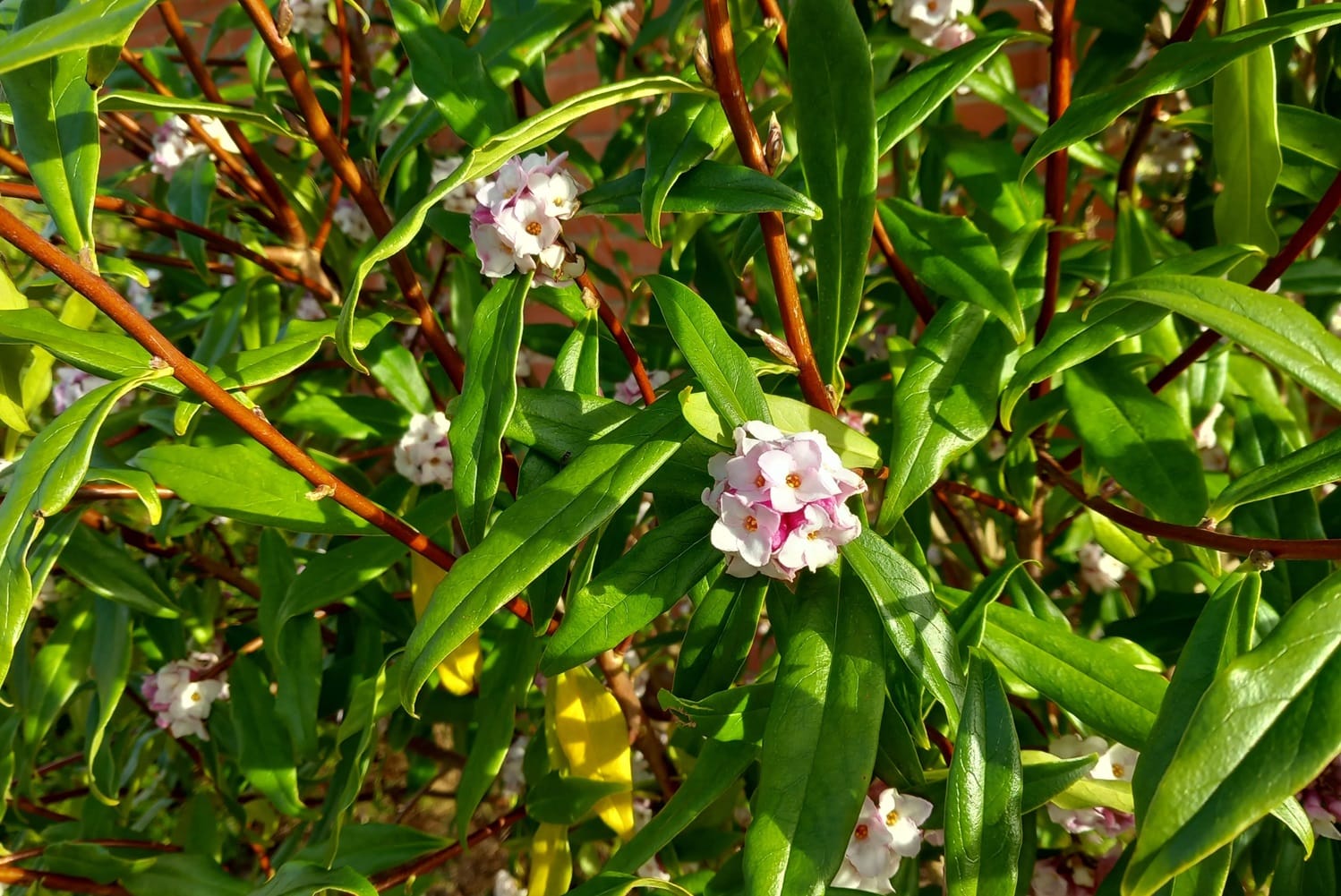
Winter-flowering plants are often strongly scented. They’ve to work harder to attract the few pollinators working during the cold months, Nic Fhionnlaoich says.
As she leads the group away from the centre and into the 50-acre garden to see more of its 17,000 species of plants, tour-group member Patrick Butler follows.
“I’m 72, but this is my first time here,” says the man from Athboy in Co. Meath, about 60km from here. “It’s like what they say, the closer to the altar, the further from godliness.”
But he and his wife Helen Butler were up in Dublin for an appointment, he says, and decided to finally visit before heading home.
As Nic Fhionnlaoich leads, the group follows after, the majority of it consisting of four young people in wheelchairs, each attended by a carer.
They’ve come up from the St John of God day centre in Islandbridge as part of a QQI level 1 course in horticulture, says healthcare assistant Eimear Keilthy, pushing a young woman in a chair.
“Tomorrow we’ll attempt to do Bridget’s crosses,” Keilthy says.
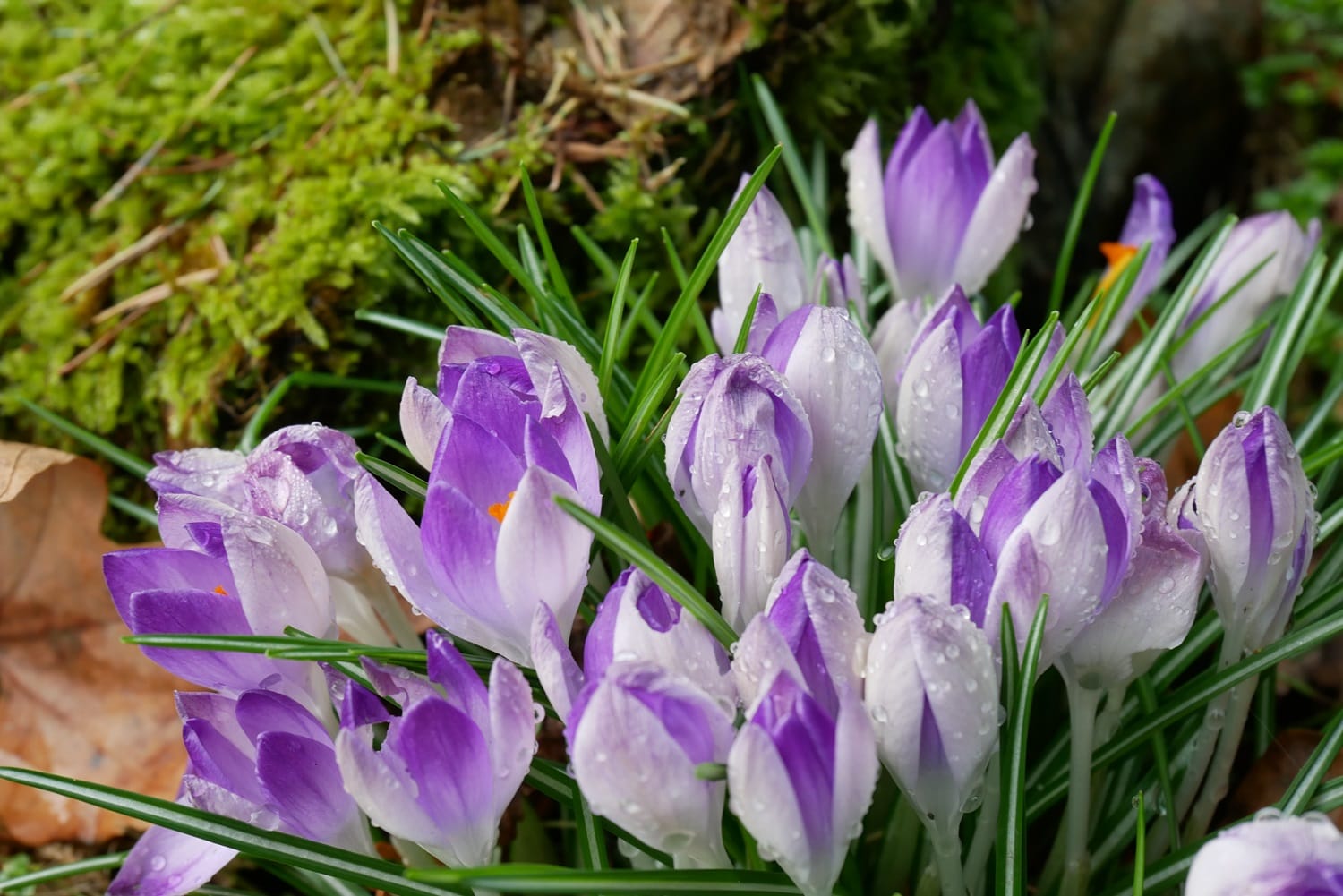
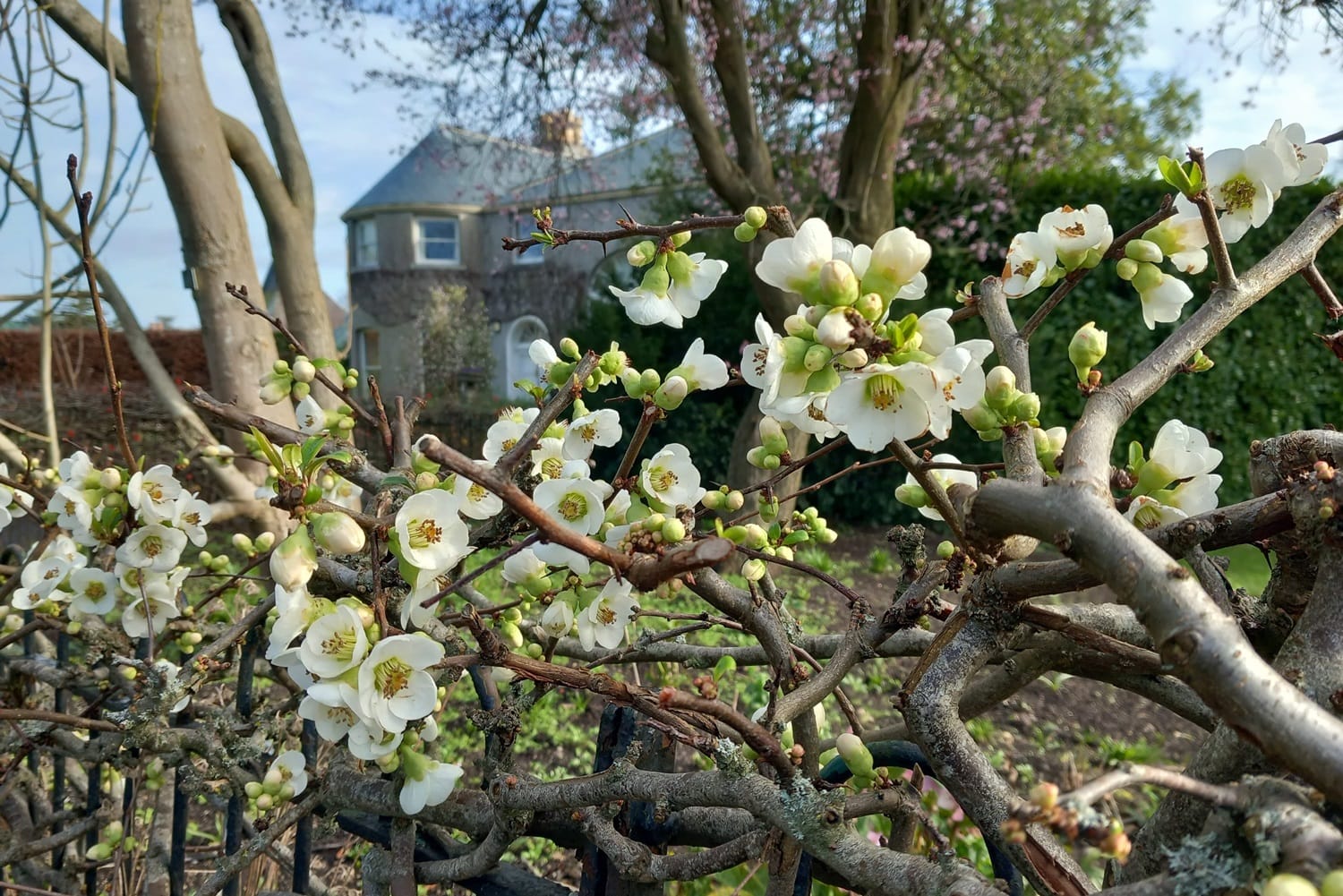
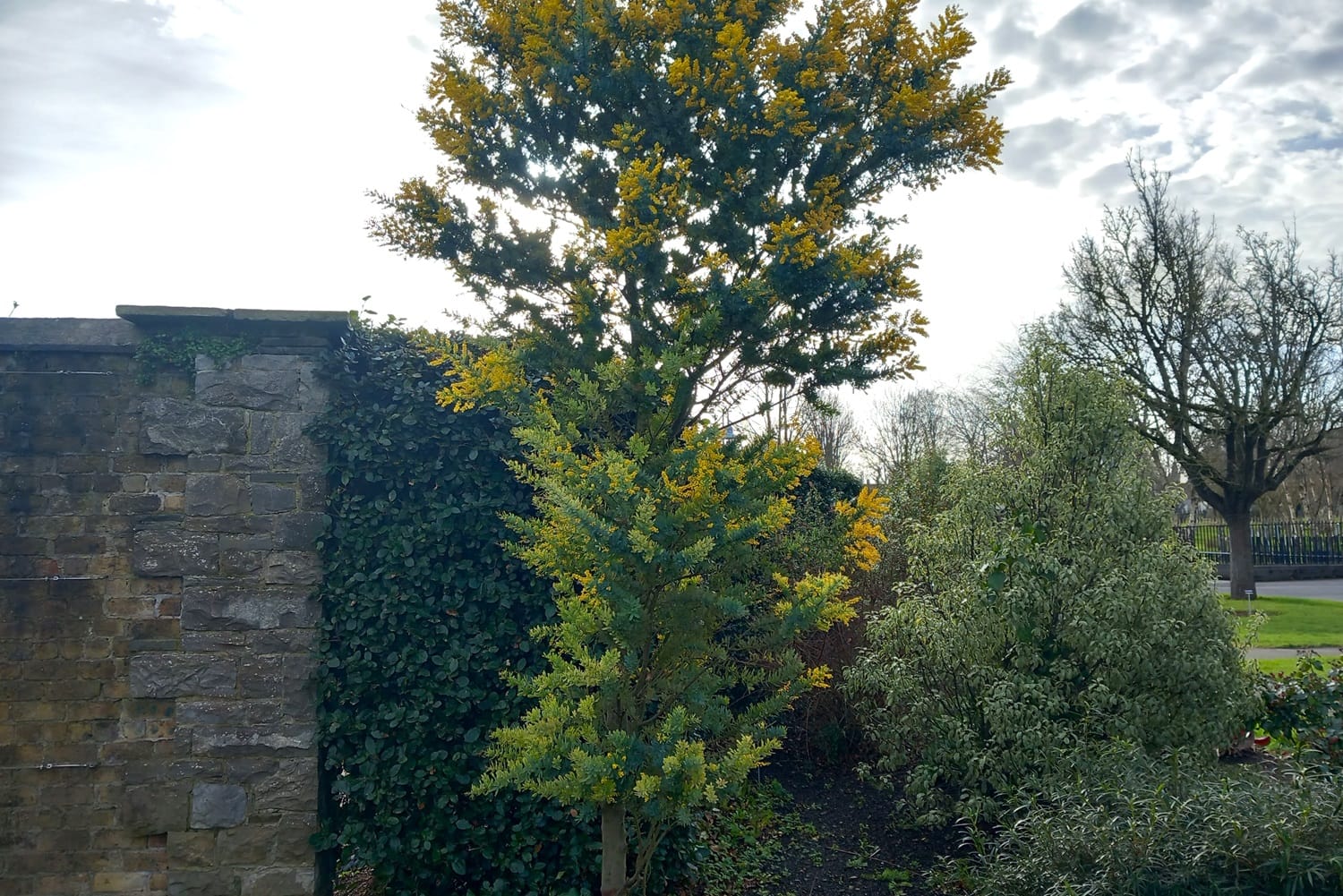
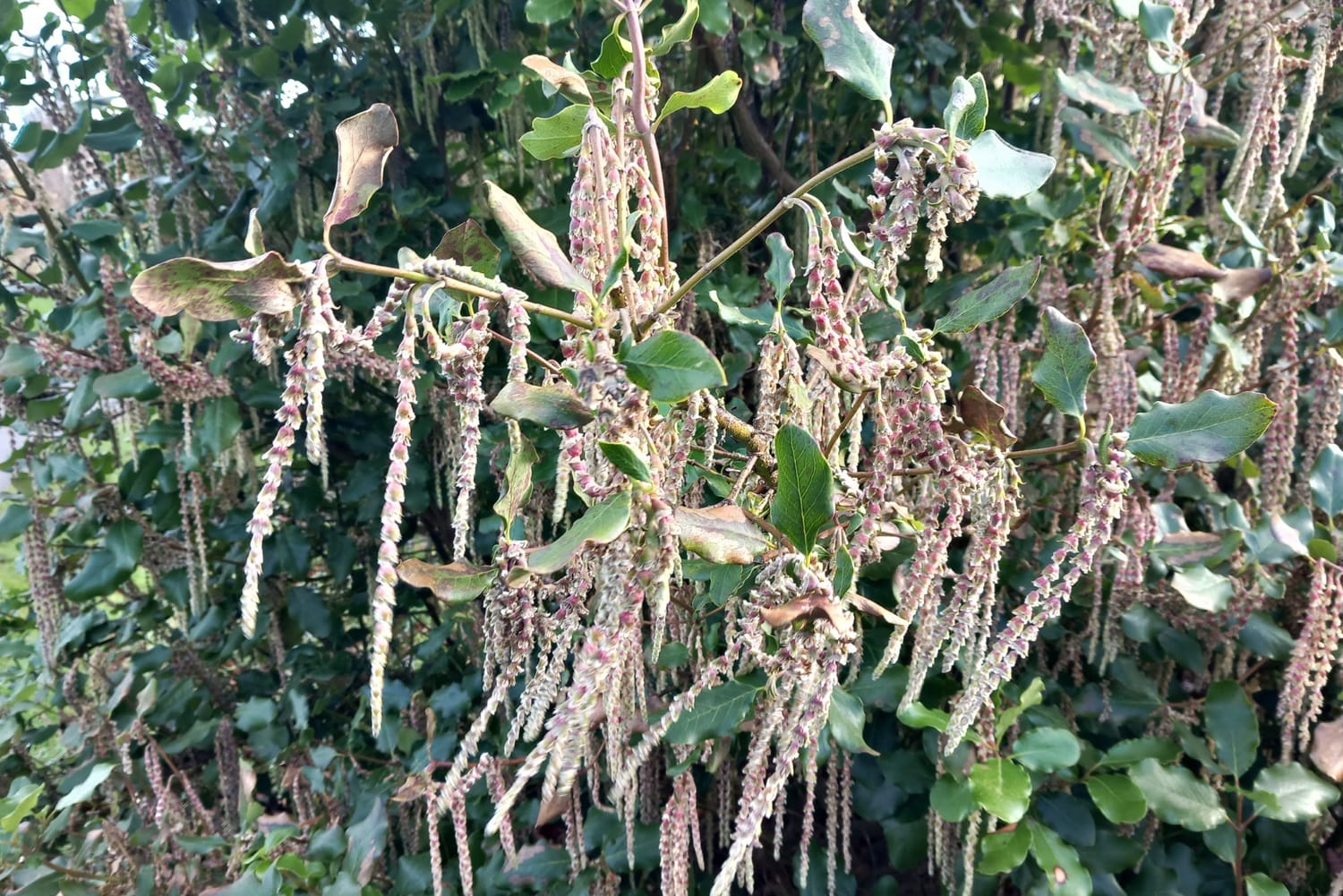
Nic Fhionnlaoich shows the group a delicate little wintersweet tree, branches covered in wilty green flowers, which she says can be made into tea.
“This is one I’ve seen a lot of bumblebees around,” she says.
Then there’s a large acacia from Australia, which now has a halo of gorgeous yellow flowers – which she says will be followed by large pods filled with edible peas.
Just beyond that, she stops to point out a silk tassel bush from the States – Oregon and California – with long white strings of little dangling flowers. “It’s wind-pollinated, so it has no scent,” Nic Fhionnlaoich says.
Further on, she stops in front of a shoulder-high thicket of mahonia, with spiky holly-like leaves, and yellow flowers.
“It’s very nice how they’ve planted a bunch of them here,” says Helen Butler. “I just planted one in my garden and it’s just sitting there looking weird.”
Among the winter-flowering plants, signs of spring are popping up too.
Stands of delicate purple crocuses push up through the ground, and tiny floor lamp-like snowdrops dangle white blossoms.
“Some people who are obsessed with them,” says Nic Fhionnlaoich. “Galanthophiles.”
The flowers are pretty amazing, though, she says. They’ve got natural anti-freeze in their cells, she says.
And when the temperature is above 10°C, the blossoms will open, she says. If it drops below, they’ll close up, to protect themselves, she says.
Not only that, she recounts a story of scientists observing people in the Caucasus rubbing snowdrops on their foreheads for pain relief.
And it turns out snowdrop bulbs contain galantamine, which is “approved for use in the management of Alzheimer’s disease in over 70 countries worldwide”, according to the UK’s Royal College of Physicians.
Altamont Gardens near Tullow in Co. Carlow has more than 150 varieties of snowdrops, Nic Fhionnlaoich says.
At about this point the Butlers break away and amble towards the gardens’ exit, probably headed home to Meath.
The folks from Islandbridge continue the tour a little longer until the hour is up and Nic Fhionnlaoich has to get on.
But there’ll be another tour tomorrow.
Get our latest headlines in one of them, and recommendations for things to do in Dublin in the other.